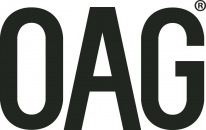Transatlantic Attraction - The Story Continues

It’s a frequent story seeing double-digit frequency growth over a few years in an emergent aviation market, with low-cost carriers securing a larger market share as they open new city pairs. So, here is another one of those stories; except it’s from Western Europe to the United States of America; hardly emergent in aviation terms. Or is it?
Summer 2017 will see over 200,000 scheduled flights in the market and some 55 million scheduled seats, representing an impressive 14% growth over two summer seasons. Quite a large part of that growth has come from the emergent long-haul low-cost sector, but even today despite what looks like being close to a three-fold increase in frequency over two years, LCCs only account for around 4% frequency share.
The UK market, with its geographic advantage, has for many years been the largest Western European country pair with over 60,000 scheduled flights planned in summer 2017; twice as many as the second largest country market and three times as many as third-placed France. Indeed, with the notable exceptions of Belgium and Norway, every Western European country market will see double-digit growth from 2015 through to 2017. In fact, some country markets such as Portugal and Finland will see nearly double the frequency although off relatively small bases in both cases.
So, what seems to be driving such growth in a very mature market, especially as economic activity remains moderate at best?
Aircraft technology is a major part of the answer. Increasing B787 deliveries to European carriers have opened new markets for legacy carriers such as British Airways to Austin and New Orleans whilst the combination of those aircraft and low-cost operators such as Norwegian have added new market pairs such as London Gatwick – Ft Lauderdale.
Strategic developments have also played a part in those frequency increases. Virgin Atlantic is refocussing its network towards the United States as the Delta Air Line’s relationship develops. Aer Lingus is exploiting its US pre-clearance benefits at Dublin and adding valuable secondary market services whilst expanding to Florida. Furthermore, TAP Air Portugal is seeking to reduce its over-reliance on Brazil as its major source of longer-haul revenues.
Interestingly, nearly all the capacity growth has been supplied by European carriers. United Airlines has less frequency scheduled for Summer 2017, American Airlines a similar level to the previous year and only Delta Air Lines has any planned frequency growth; even then, it’s only a cautious 4%. Perhaps network opportunities and the need to catch up with overseas airline services in the Pacific and Asian markets are where management efforts are currently focussed for the US carriers.
Low-cost self-connecting passengers are also aiding growth with Wow Airlines building an extensive connecting hub in Reykjavik alongside the already-established Icelandair operation. Indeed, Iceland has seen a 75% increase in frequency over the last two summer seasons to the United States and now has more scheduled flights than markets such as Switzerland.
Such rapid growth in frequency and a similar 16% increase in capacity will need to be reflected in similar levels of traffic growth if returns are going to match the levels seen in recent years. With consumer confidence perhaps not quite as strong as last year, that may be a challenge in some markets and only time will tell on that front. But what we can probably expect are some very competitive fares from all airlines next summer as the transatlantic market warms up with the seasons.


